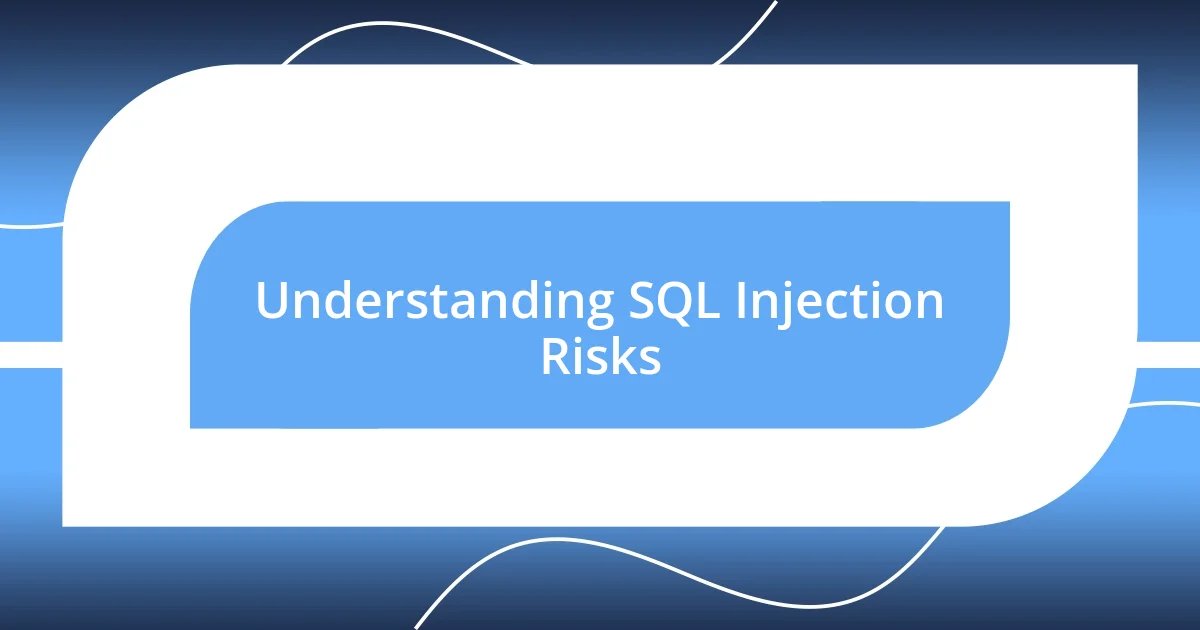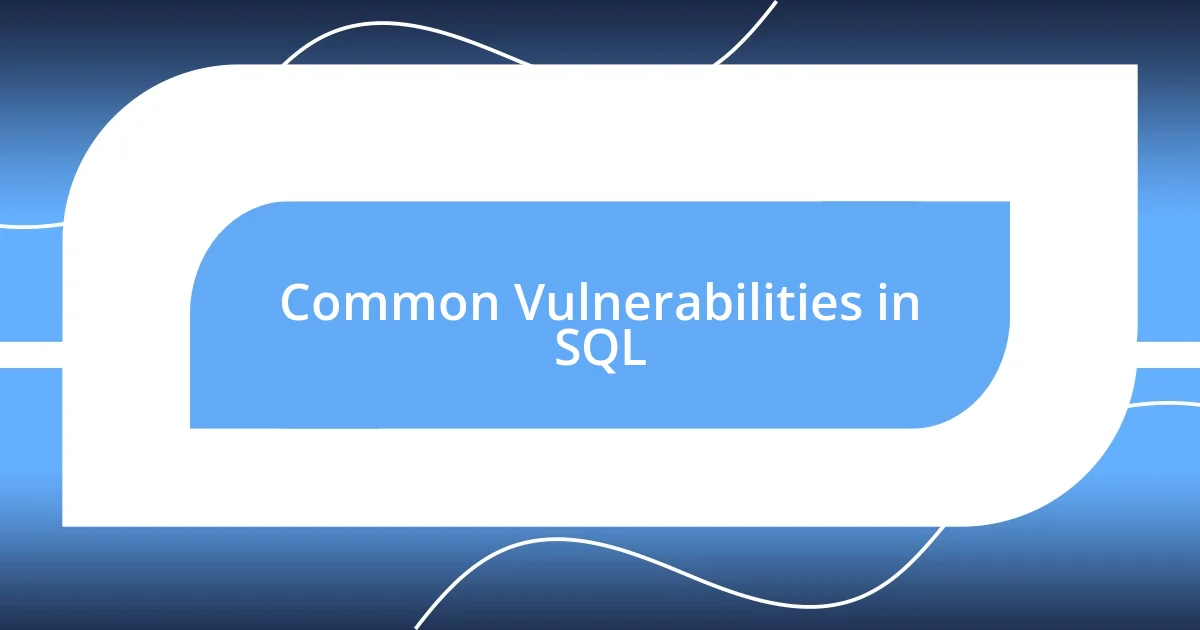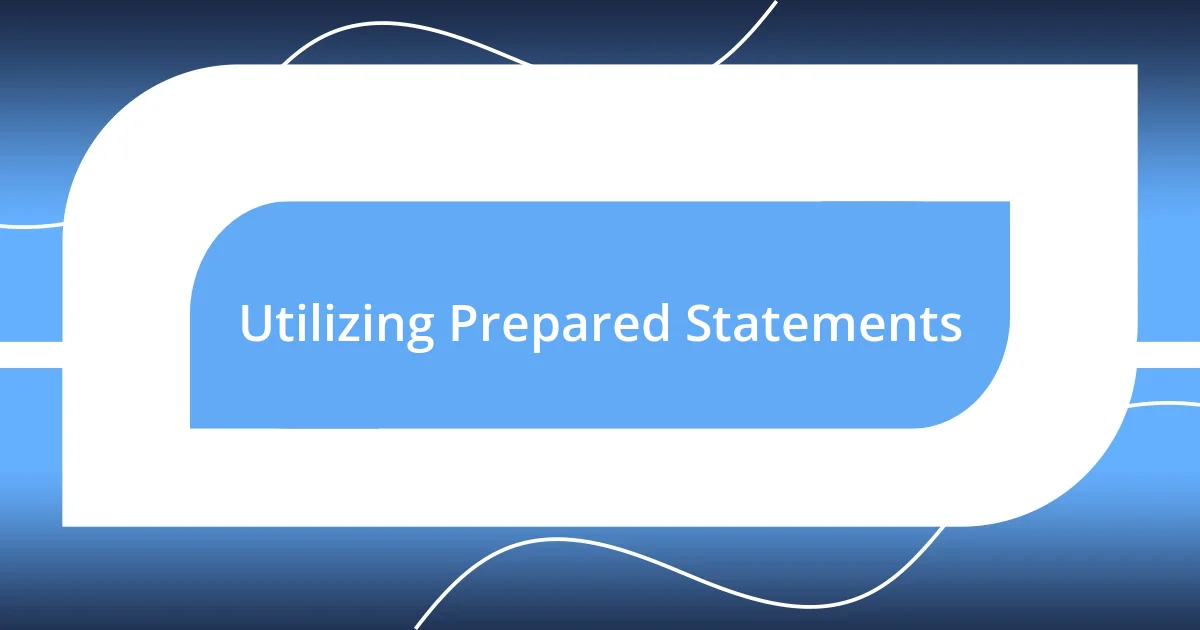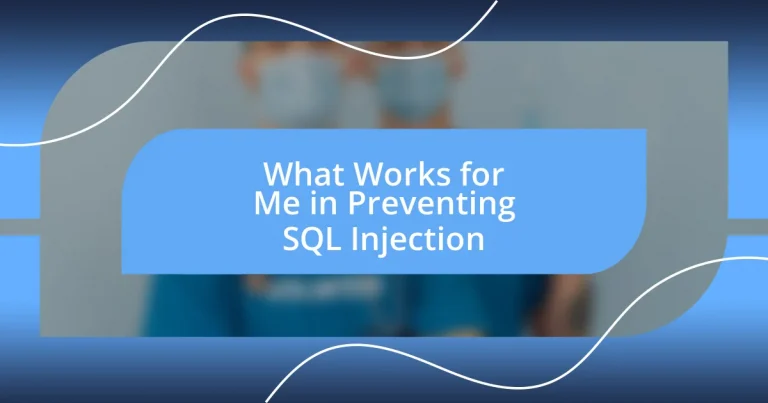Key takeaways:
- SQL injection exploits vulnerabilities in how applications handle user inputs, emphasizing the need for proactive security measures in software development.
- Common vulnerabilities include improper input validation, dynamic SQL usage, excessive permissions, revealing error messages, and outdated libraries, which developers must address vigilantly.
- Effective techniques like whitelist validation, prepared statements, and parameterized queries greatly enhance security by preventing unauthorized SQL commands and standardizing safe coding practices.

Understanding SQL Injection Risks
SQL injection poses a significant risk to any application that interacts with a database. I recall when a colleague of mine learned this lesson the hard way; their website was compromised, leading to data leakage that seriously damaged their reputation. How many businesses realize the potential fallout until it’s too late?
The essence of SQL injection is that it exploits vulnerabilities in how applications handle user inputs. I often find myself wondering how something as simple as a poorly written query could lead to catastrophic breaches. It’s a stark reminder that security should never be an afterthought in software development.
What’s particularly troubling is that even seasoned developers sometimes underestimate these risks. It’s easy to think, “It won’t happen to me,” but that’s a dangerous mindset. Each time I hear about a new breach, I feel a sense of urgency to share these experiences and motivate proactive security measures.

Common Vulnerabilities in SQL
When delving into common vulnerabilities in SQL, it’s crucial to recognize how easily attackers can exploit these weaknesses. I remember a time during a code review when I came across a developer using dynamic SQL without proper input validation. That moment really struck me—the realization that even a small oversight could create a gateway for malicious activity. It underscored the importance of being vigilant and maintaining best practices in code.
Here are some common vulnerabilities that can be found in SQL applications:
- Improper Input Validation: Failing to validate user inputs can lead to unauthorized queries.
- Dynamic SQL Usage: Constructing SQL queries with user input directly increases the risk of injection.
- Excessive Database Permissions: Granting unnecessary permissions can expose the database to potential attacks.
- Error Messages: Detailed error messages can reveal information about database structures, aiding attackers.
- Outdated Libraries: Using outdated database libraries may include known vulnerabilities that can be exploited.
Each of these vulnerabilities represents a potential entry point for attackers, making it paramount for developers to remain proactive in identifying and addressing these weaknesses.

Effective Input Validation Techniques
Validating user input is a crucial defensive technique that I find indispensable in preventing SQL injection attacks. I’ve learned the hard way that allowing unchecked data to enter your system can lead to chaos. For instance, I once worked on a project where a simple lack of input validation allowed a script kiddie to exploit our application. The lesson? Always validate inputs against a set of known criteria before processing them.
One of my go-to methods is to implement a whitelist approach, where I define acceptable characters and formats. This practice ensures that only valid data reaches my database. I remember a project where we meticulously crafted rules around what input fields could accept. It felt reassuring to see how this proactive measure significantly decreased the risk of an injection attempt.
Another effective input validation technique I often advocate for is parameterized queries. This practice separates data from the query logic, thus reducing injection risk. I participated in a workshop highlighting how simple changes in coding practices could have a substantial impact on security. By adopting parameterization, I felt empowered, knowing our applications would be much less vulnerable to attacks.
| Validation Technique | Description |
|---|---|
| Whitelist Validation | Accepts only predefined characters and formats. |
| Parameterized Queries | Separates user data from SQL code, preventing injections. |
| Regular Expressions | Validates input against specific patterns. |

Utilizing Prepared Statements
Utilizing prepared statements in my development process has been a game changer for preventing SQL injection attacks. I remember clearly the first time I switched from dynamic SQL queries to prepared statements. It felt like a weight lifted off my shoulders; I could finally breathe easier knowing that the user inputs wouldn’t directly influence my SQL commands. Have you ever experienced the anxiety that comes with knowing your code is at risk? I surely have, and that fear drove me to adopt this safest practice.
Prepared statements inherently separate the SQL code from the actual user input, ensuring that the input is treated strictly as data rather than executable commands. I often recall a live production incident where a colleague’s oversight allowed user input to execute dangerous SQL statements. Transitioning to prepared statements after that mishap not only vastly improved our security posture but also fostered a greater sense of teamwork. We were all in it together now, securing our code as a united front.
What’s truly gratifying is witnessing how prepared statements standardize coding practices across teams. I started implementing them not just for my own projects but encouraged others to do the same. The confidence it instills in the team is palpable; when everyone adheres to this practice, you can almost feel the collective commitment to security. It’s invigorating to think, “We’ve got this,” knowing we’re harnessing one of the best tools in our arsenal against SQL injection.

Implementing Parameterized Queries
Implementing parameterized queries has been a revelation in my approach to securing applications. I can distinctly remember a time when I was grappling with a particularly tricky SQL injection vulnerability. The relief I felt after converting those vulnerable queries into parameterized ones was immense. Suddenly, instead of dread while reviewing user input, I found myself focusing on the more creative aspects of coding, knowing my data handling was much safer.
When I first adopted parameterized queries, I was pleasantly surprised by how easy they were to implement within my existing frameworks. It felt like a light bulb moment; by using placeholders for parameters, it transformed how I constructed my SQL statements. I once showcased this method to a colleague who was frustrated with constant security headaches, and the look on their face when they grasped the concept was priceless. It was as if a complicated puzzle finally clicked into place, giving us both a newfound sense of confidence.
I often think about how parameterized queries redefine the development process itself. Have you ever had that nagging worry about insecure data input? Moving to this method not only mitigated that anxiety but also reinforced a culture of security within my team. It’s thrilling to engage in conversations about coding practices where everyone is on the same page, sharing in the responsibility of maintaining our application’s integrity. In embracing parameterized queries, I feel like I’ve contributed to a more robust safety net, ensuring we all breathe a little easier as we continue our coding adventures.












